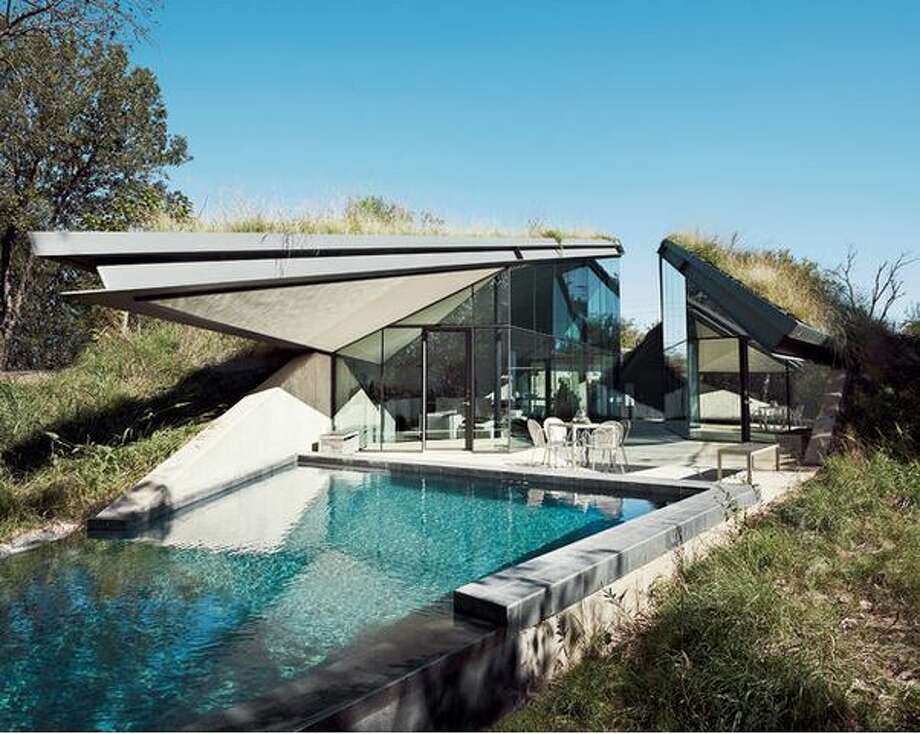Texas' ample acreage features stretches of coastal shorelines, sprawling ranches and metropolitan cityscapes. These diverse settings translate to residential structures that vary widely but are uniquely Texan.
Here are some of the state's most fascinating residences:
Austin's underground glass house: This grass turf-covered 1,400-square-foot Austin domicile is a partially subterranean structure made of glass, concrete and steel. The efficient home is as smart as it is unusual: There’s a place for rainwater collection, so that the water can be filtered and reused. The green roof provides thermal insulation to lock out heat in hot Texas summers and to warm the space during winter. Even the swimming pool is practical, it acts as an additional thermal mass to regulate temperature. The concrete roof includes an anti-erosion mat, and the rooftop plants are watered by an irrigation system.
The shipping-container homes in Dallas: Composed of 14 shipping containers, the three-bedroom, 3,700-square-foot house features deep balconies that let in natural light without exposing the home's interior to direct sunlight. Portions of the containers show through thanks to exposed corrugated ceilings and container gates that have been converted into sliding doors. On the ground level, polished cement floors enhance the structure's industrial aesthetic, and doorway frames create distinct spaces in the open-floor layout. Outside, a 1,400-square-foot roof deck offers a view of the lake and the Dallas skyline beyond. On the ground floor, a 40-foot-long swimming pool aligns with the house's tallest wall, creating a striking visual effect.
HoustonChronicle.com: Foreclosed Highland Village home listed at $1.3M
The curious kettle in Galveston: Dubbed the "Kettle House," the inverted steel dome with a wood-shingle roof at 1410 Miramar Drive has been the subject of curiosity for years. Recently, the owner of the building, Mary Etheridge-Rachels, spoke to Dallas-area writer Linda Armstrong, who documented some of its historic highlights. Etheridge-Rachels reaffirmed some of the theories found in "Weird Texas: Your Travel Guide to Texas's Local Legends and Best Kept Secrets," in which authors Wesley Treat, Heather Shades and Rob Riggs explain that it was dreamed up by a man who made oil storage tanks. Stokley reportedly set his sights on a spherical steel building his company, Graver Tank & Manufacturing Co. Inc., had crafted for a client. He purchased the steel sculpture and had it transported to the Miramar Drive site, where he dismantled it with plans for an open-layout shop. Sadly, he passed away before it could be completed. Years later, it was remodeled, but it retains its quirky exterior.
The Round Top bridge house: The glass house elevated atop pilings in the center of a four-acre lake in Round Top, Texas, is among the state's modern-rustic waterfront properties. Built in 2012, the three-story house is attached to the mainland by a small bridge. It has two bedrooms and a loft space on the third floor that offers scenic panoramas. The islandlike house is connected to more than 23 acres of countryside in Fayette County. On the grounds are three RV stations, a windmill and a commercial irrigation system. Other amenities include a five-car garage with two car lifts, a waterfall with swimming pool at the top of a hill and separate guest quarters. The fascinating structure was once listed at $5.3 million. It was later reduced to $4 million before seeing another price slash. It's currently off the market.
The "Steel House" by the late sculptor Robert Bruno: Part sculpture, part house and part 1970s Texas time capsule, the structure is located in Ransom Canyon, about 15 miles east of Lubbock. The bold piece is made of 150 tons of steel that rests on narrow legs, giving the illusion of a hovering spacecraft. The three-level, 2,200-square-foot house sits at the edge of a jagged hill overlooking a nearby lake. Currently, the project remains an unfinished home, with bare walls that should have held elaborate artwork and hollow legs that should have held and aquarium and library.



0 Comments